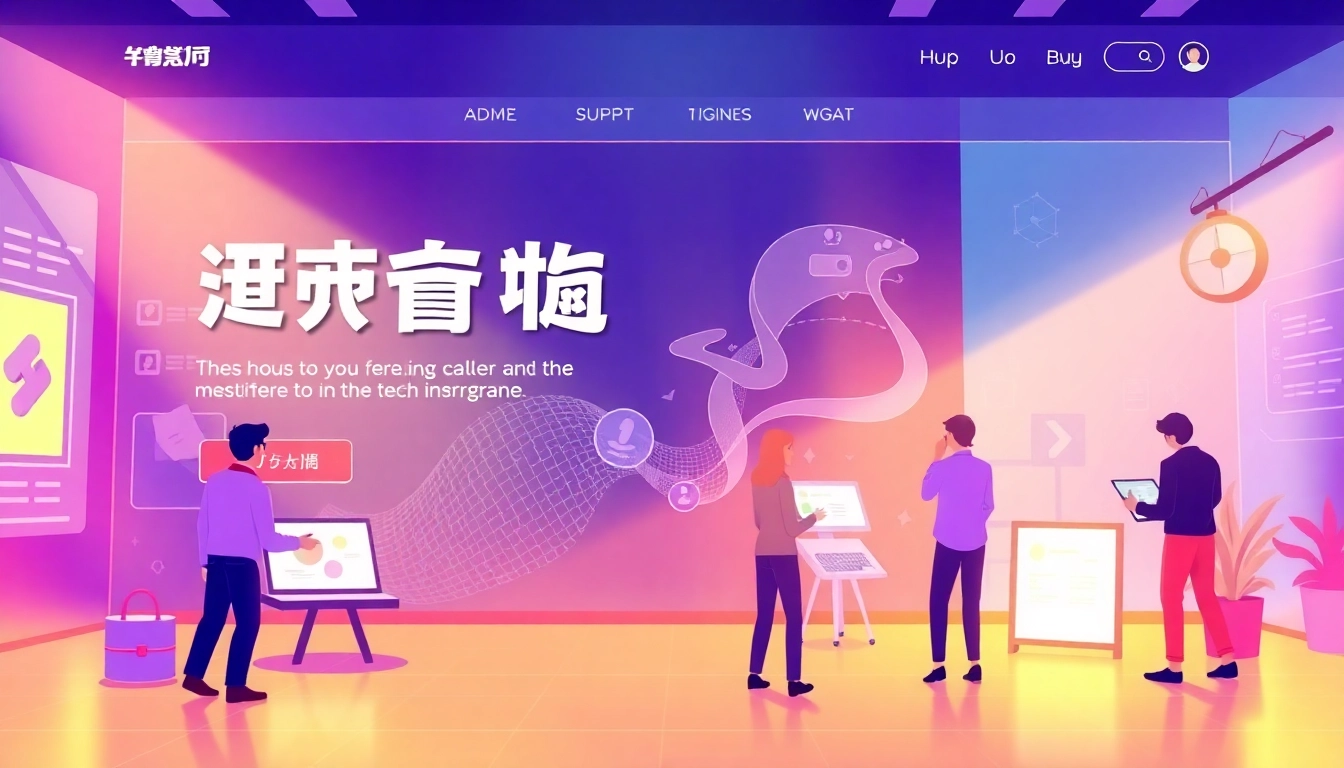Understanding the Fundamentals of Website Design
Website design is a critical component in the evolving landscape of digital marketing and online presence. It not only reflects the brand’s identity but also serves as the first point of contact for potential customers. With a well-structured approach and the right tools, businesses can create engaging and effective websites. Understanding the nature of website design is paramount for anyone looking to succeed in today’s competitive digital marketplace.
The Principles of Effective Website Design
The foundation of effective website design is built upon several essential principles. These principles include:
- Usability: Ensuring that the website is easy to navigate and understand enhances user satisfaction.
- Consistency: Maintaining a uniform layout, typography, and color scheme creates a cohesive brand image.
- Load Speed: Websites should load quickly to prevent frustration, which can drive users away.
- Aesthetics: An appealing design attracts more visitors and keeps them engaged.
- Accessibility: Websites should be designed to be accessible to all users, including those with disabilities.
When these principles are strategically applied, they significantly enhance a website’s effectiveness and user experience.
Key Components of Website Design
Effective website design encompasses various components, which include:
- Layout: The arrangement of visuals and text on a page is critical. A grid layout can help maintain clean lines and a structured appearance.
- Typography: The choice of fonts impacts readability and conveys brand personality. Select fonts that are easy to read on screens.
- Color Palette: Colors evoke emotions and can influence user behavior. Choosing the right color scheme helps in brand recognition and enhances the overall aesthetics of the website.
- Visual Elements: Images, videos, and graphics can enhance engagement but should be used judiciously to maintain page load speed.
- Content: High-quality, relevant content is crucial for retaining users and improving SEO.
Importance of Responsive Design
In an increasingly mobile-centric world, responsive design has become essential. Responsive design ensures that a website adapts seamlessly to different screen sizes and devices, providing an optimal experience irrespective of how the user accesses the site. A responsive website not only improves usability but also positively impacts SEO rankings, as search engines prioritize mobile-friendly sites. To achieve responsive design, the following practices should be applied:
- Use fluid grids and flexible images to ensure that content scales effectively.
- Implement CSS media queries to apply different styles based on the device characteristics.
- Test the website on various devices to ensure a consistent experience across all platforms.
Essential Tools for Successful Website Design
An array of tools and platforms can streamline and enhance the website design process. Understanding and utilizing these tools will significantly impact the outcome of web projects.
Popular Design Software and Platforms
Web designers can leverage several software options to create stunning websites:
- Adobe XD: A powerful tool for designing user interfaces and creating prototypes.
- Figma: A collaborative interface design tool that enhances teamwork and creativity.
- Sketch: Ideal for vector graphics editing and UI/UX design.
- InVision: Allows designers to create interactive prototypes that simulate user experiences.
- WordPress: A versatile content management system (CMS) that simplifies website creation and blogging.
Collaborative Tools for Web Designers
Collaboration is key in web development, and several tools facilitate teamwork and communication:
- Slack: A messaging platform that enables team discussions and project coordination.
- Trello: A project management tool that uses boards and cards to organize tasks and workflows.
- Asana: Helps teams track their work and manage projects with deadlines.
- Google Drive: Simplifies file sharing and collaboration across documents and spreadsheets.
Utilizing Templates for Efficiency
Using templates can significantly speed up the website design process. Many platforms offer a range of customizable templates that cater to various industries and needs. Templates provide a structured layout and predefined design elements, allowing designers to focus on content rather than starting from scratch. Benefits of utilizing templates include:
- Time efficiency in design and development.
- A broader choice of design aesthetics and layouts for inspiration.
- Cost-effectiveness, especially for smaller businesses or projects.
Key Trends Shaping Website Design Today
Staying current with design trends is crucial for ensuring that websites are engaging and functional. Here are some prevailing trends:
Minimalism Versus Maximalism in Web Design
While minimalism promotes a clean, uncluttered design focusing on essential elements, maximalism embraces bold colors, rich textures, and elaborate graphics. Designers should assess their target audience and brand identity to choose an appropriate style. Combining both approaches can create a unique aesthetic that draws users in while providing clarity in navigation and content delivery.
Embracing Dark Mode and Customization Features
Dark mode has gained popularity due to its aesthetic appeal and reduced eye strain. Offering users the ability to toggle between light and dark modes enhances user experience and engagement. Additionally, allowing users to customize their interface empowers them to create a more personal connection with the website.
Utilizing Video and Interactive Elements
Incorporating video content and interactive elements into web design can increase user engagement significantly. Videos convey information quickly and are more engaging than text alone. Interactive elements like quizzes or polls encourage user participation and can enhance the overall user experience while providing valuable data on user preferences and behaviors.
Best Practices for User Experience in Website Design
Delivering a great user experience (UX) is vital for retaining visitors and converting them into customers. Here are best practices to enhance UX:
Navigation and Accessibility Considerations
A well-structured navigation system is essential for helping users quickly find the information they need. Incorporate intuitive menu designs, breadcrumbs, and search functionality. Additionally, consider accessibility features such as alt text for images, screen reader compatibility, and ensuring that color contrasts are optimal for users with visual impairments.
Color Psychology in Website Design
Colors evoke different emotions and can influence user behavior. Understanding color psychology can help designers create more impactful websites. For example:
- Blue conveys trust and professionalism.
- Red elicits excitement and urgency.
- Green is often associated with growth and wellness.
- Yellow can stimulate optimism and creativity.
Select colors that align with the brand’s message and values while keeping the target audience in mind.
Importance of Fast Loading Times
Website loading time is crucial for user retention. Slow-loading sites lead to frustration and abandonment. Optimize images, reduce redirects, and leverage browser caching as strategies to improve loading speeds. Regularly testing page speed using tools will help maintain optimum performance.
Evaluating Your Website Design Outcomes
After implementing a new design, it’s crucial to assess its effectiveness to ensure it meets the initial objectives and user expectations.
Metrics to Measure Design Effectiveness
Utilize various metrics to measure design success, including:
- Bounce Rate: A high bounce rate may indicate that the site fails to meet user expectations.
- Average Session Duration: Longer session times suggest engaging content and effective design.
- Conversion Rate: This metric indicates how effectively the design encourages visitors to take desired actions.
Gathering Feedback for Continuous Improvement
Collecting user feedback through surveys or usability testing can provide insights into areas for improvement. Encourage honest feedback on various design elements, functionality, and content quality. Implementing changes based on user feedback fosters a user-centered approach to web design.
Case Studies of Successful Website Design Projects
Analyzing successful website designs can provide inspiration and insight. Focus on aspects such as user engagement, aesthetic appeal, and brand alignment. Case studies can illustrate how specific design approaches led to improved performance, offering practical models for your own projects.















Leave a Reply